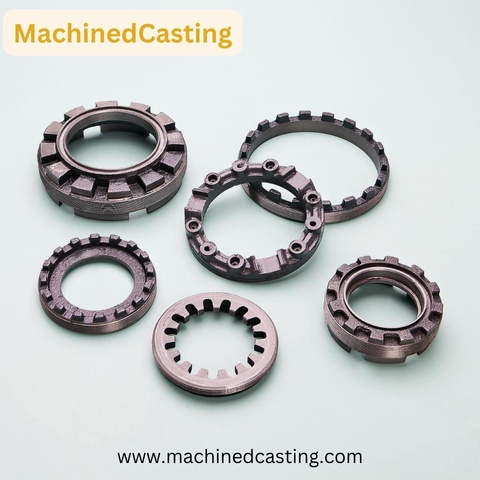Gray iron casting is a prevalent and versatile method used in various industries for producing durable and intricate metal components. From automotive parts to machinery components, gray iron casting offers exceptional strength, wear resistance, and cost-effectiveness. In this guide, we'll delve into the intricacies of gray iron casting, covering everything from its composition and casting process to its applications and advantages.
Understanding Gray Iron Casting
Gray iron, also known as grey cast iron, is characterized by its gray appearance due to the graphite flakes within its microstructure. These graphite flakes provide excellent lubrication and vibration damping properties, making gray iron an ideal material for components subjected to heavy loads and high temperatures.
Composition of Gray Iron
Gray iron primarily consists of iron, carbon, and silicon, along with small amounts of other elements such as manganese, sulfur, and phosphorus. The presence of graphite flakes contributes to its unique properties, including good machinability and thermal conductivity.
The Casting Process
-
Pattern Making: The process begins with the creation of a pattern, typically made of wood, plastic, or metal, which serves as a replica of the desired component.
-
Molding: The pattern is used to create a mold cavity into which molten gray iron will be poured. Molding methods include sand casting, shell molding, and investment casting, depending on the complexity and quantity of parts needed.
-
Melting and Pouring: Gray iron is melted in a furnace at temperatures exceeding 2,500°F (1,370°C). Once molten, it is poured into the prepared mold cavity.
-
Solidification and Cooling: The molten iron solidifies within the mold, forming the desired shape. Cooling rates are carefully controlled to prevent defects such as shrinkage and porosity.
-
Finishing: After cooling, the casting is removed from the mold and undergoes finishing processes such as machining, grinding, and surface treatment to achieve the required dimensional accuracy and surface finish.
Applications of Gray Iron Casting
Gray iron casting finds applications in a wide range of industries, including automotive, aerospace, construction, and machinery manufacturing. Common components produced through gray iron casting include engine blocks, cylinder heads, brake drums, and gearbox housings.
Advantages of Gray Iron Casting
- Cost-Effectiveness: Gray iron casting is a cost-effective manufacturing process, particularly for large production runs.
- Versatility: It can accommodate intricate shapes and complex geometries.
- High Strength and Wear Resistance: Gray iron offers excellent mechanical properties, making it suitable for components subjected to heavy loads and abrasive wear.
Conclusion
Mastering gray iron casting requires a deep understanding of its composition, casting process, and applications. By harnessing the unique properties of gray iron, manufacturers can produce high-quality components that meet the demands of modern industry. Whether in automotive, aerospace, or machinery manufacturing, gray iron casting remains a cornerstone of metalworking processes, providing reliability, durability, and efficiency.


No comments yet